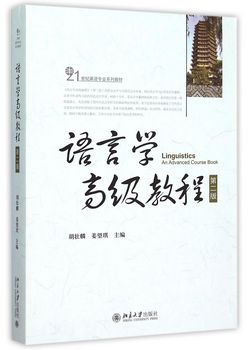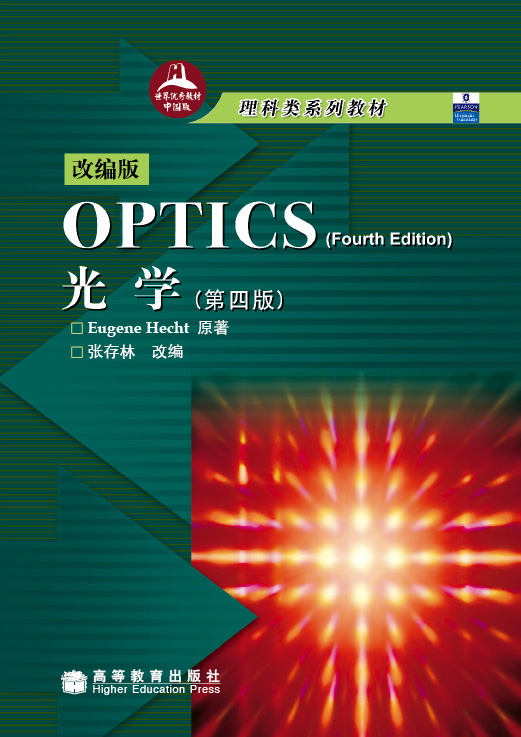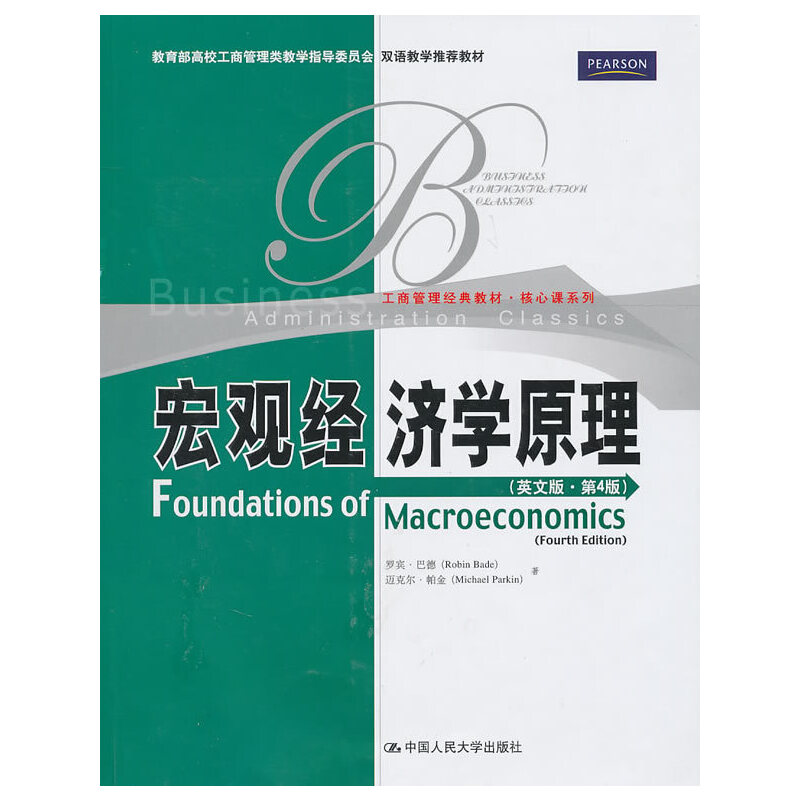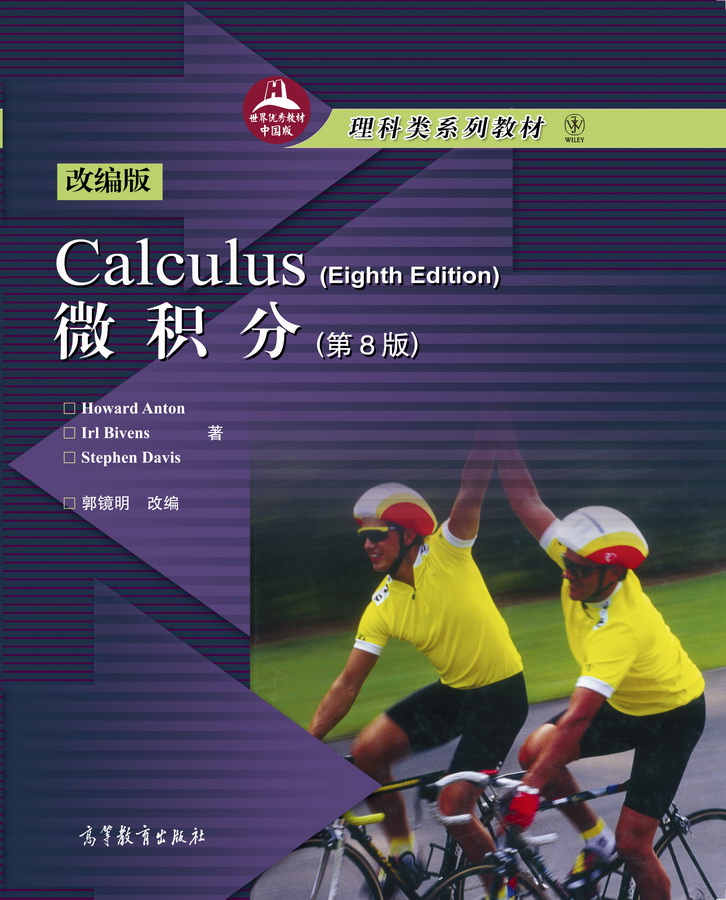语言学高级教程(第二版) / 21世纪英语专业系列教材
¥88.00定价
作者: 胡壮麟,姜望琪
出版时间:2015-07
出版社:北京大学出版社
- 北京大学出版社
- 9787301258255
- 2版
- 34767
- 41169816-0
- 平装
- 16流
- 2015-07
- 700
- 532
- 文学
- 外国语言文学
- H0
- 英语
作者简介
内容简介
《语言学高级教程》第一版出版于2002年。随着岁月的流逝,有些内容逐渐陈旧,不再适应读者的需要。为此,我们从2011年秋天开始筹划该教程的修订。我们联系了各位作者,征求了修订意见,确定了修订方案。为了不增加读者的负担,这次修订的总原则是一般不增加篇幅,增添新内容,因而要相应地删减部分旧内容。
在各位作者的努力下,2013年5月完成修订,大多数章节都有一些改动。除了改正一些错误以外,变动比较大的是,原来的第二章(Phonetics)和第三章(Phonology)被合并成了一章,缩减了语音学的一些内容,更名为Phonological Analysis;第七章Linguistic Comparison(原第八章)增加了对比语言学一节;第九章(原第十章Psycholinguistics)改成了Cognitive Linguistics,以反映当代语言学新近的发展;第十章Pragmatics(原第十一章)删减了一些内容,增加了一个新小节;第十二章Computational Linguistics(原第十三章)删除了两个小节,充实了一个小节;原第十五章整章删除。
在各位作者的努力下,2013年5月完成修订,大多数章节都有一些改动。除了改正一些错误以外,变动比较大的是,原来的第二章(Phonetics)和第三章(Phonology)被合并成了一章,缩减了语音学的一些内容,更名为Phonological Analysis;第七章Linguistic Comparison(原第八章)增加了对比语言学一节;第九章(原第十章Psycholinguistics)改成了Cognitive Linguistics,以反映当代语言学新近的发展;第十章Pragmatics(原第十一章)删减了一些内容,增加了一个新小节;第十二章Computational Linguistics(原第十三章)删除了两个小节,充实了一个小节;原第十五章整章删除。
目录
Chapter 1Linguistics—A Pilot Science
1.1Why Study Linguistics?
1.2What Is Language?—Defining the Object of Study
1.3Origin of Language
1.4Design Features of Language
1.5Animal Communication Systems, Gesture and
Other Language Forms
1.6Perspectives of Language Studies
1.7Functions of Language
1.8Important Distinctions in Linguistics
1.9Data of Linguistics
1.10Status and Prospect of Linguistics
Chapter 2Phonological Analysis
2.1Transcribing Speech Sounds
2.2Consonants and Vowels
2.3Phonemic vs. Phonetic Transcriptions
2.4Distinctive Features and Rule Representation
2.5Suprasegmentals and Feature Geometry
2.6Optimality Theory
2.7Conclusion
Chapter 3Morphology
3.1Morphemes, Morphs and Allomorphs
3.2Classification of Morphemes
3.3Morphemization
3.4Allomorphy
3.5Word, Wordform and Lexeme
3.6Morphology and Wordformation
3.7Approaches and Problems
Chapter 4Generative Syntax
4.1Generative Grammar: Some Basic Assumptions
4.2Phrase Structure Rules
4.3Projection from Lexicon
4.4The Minimalist Approach
Chapter 5Functional Syntax
5.1Vilém Mathesius
5.2Frantiek Dane
5.3Michael Halliday
5.4Summary
Chapter 6Semantics
6.1Introduction
6.2Meanings of “Meaning”
6.3The Referential Theory
6.4Sense Relations
6.5Componential Analysis
6.6Sentence Meaning
Chapter 7Linguistic Comparison
7.1Introduction
7.2Comparative and Historical Linguistics
7.3Typological Comparison
7.4Contrastive Linguistics
Chapter 8Language, Culture, and Society
8.1Introduction
8.2Language and Culture
8.3Language and Society
8.4Sociolinguistics and Language Teaching
8.5Summary
Chapter 9Cognitive Linguistics
9.1Introduction
9.2Cognitive Abilities and Cognitive Processes
9.3Cognitive Semantics
9.4Cognitive Grammar
Chapter 10Pragmatics
10.1Introduction
10.2Speech Act Theory
10.3The Classical Theory of Implicature
10.4PostGricean Theories
10.5Recent Developments in Pragmatics
Chapter 11Issues of Stylistics
11.1Introduction
11.2Style and Stylistics
11.3Style as Rhetoric: The Initial Stage of Stylistics
11.4One Style or Several Styles?
11.5Aspects of Style: The Writerstyle as Writer’s
Individual/Personal Singularities
11.6Aspects of Style: The Textstyle as Linguistic
Sameness (Structural Equivalence)
11.7Aspects of Style: The Textstyle as Linguistic
Difference (Deviation or Foregrounding)
11.8Aspects of Style: The Readerstyle
as Reader’s Response
11.9Aspects of Style: The Context:
Style as Function
11.10Aspects of Style: The Meaning:
Style as Meaning Potential
11.11Concluding Remarks: Linguistics,
Literary Criticism, and Stylistics
Chapter 12Computational Linguistics
12.1What is Computational Linguistics?
12.2Machine Translation
12.3Corpus Linguistics
12.4Information Retrieval
12.5Looking into the Future
Chapter 13Second Language Acquisition
13.1Introduction
13.2The Role of Internal Mechanisms
13.3The Role of Native Language
13.4Input, Interaction and Output
13.5Nonlanguage Influences
13.6Summary
Chapter 14Modern Theories and Schools of Linguistics
14.1The Beginning of Modern Linguistics
14.2The Prague School and the Copenhagen School
14.3The London School
14.4Halliday and SystemicFunctional Grammar
14.5American Structuralism
14.6Chomsky and TransformationalGenerative Grammar
14.7Revisionist/Rebellious Theories
14.8Concluding Remarks
1.1Why Study Linguistics?
1.2What Is Language?—Defining the Object of Study
1.3Origin of Language
1.4Design Features of Language
1.5Animal Communication Systems, Gesture and
Other Language Forms
1.6Perspectives of Language Studies
1.7Functions of Language
1.8Important Distinctions in Linguistics
1.9Data of Linguistics
1.10Status and Prospect of Linguistics
Chapter 2Phonological Analysis
2.1Transcribing Speech Sounds
2.2Consonants and Vowels
2.3Phonemic vs. Phonetic Transcriptions
2.4Distinctive Features and Rule Representation
2.5Suprasegmentals and Feature Geometry
2.6Optimality Theory
2.7Conclusion
Chapter 3Morphology
3.1Morphemes, Morphs and Allomorphs
3.2Classification of Morphemes
3.3Morphemization
3.4Allomorphy
3.5Word, Wordform and Lexeme
3.6Morphology and Wordformation
3.7Approaches and Problems
Chapter 4Generative Syntax
4.1Generative Grammar: Some Basic Assumptions
4.2Phrase Structure Rules
4.3Projection from Lexicon
4.4The Minimalist Approach
Chapter 5Functional Syntax
5.1Vilém Mathesius
5.2Frantiek Dane
5.3Michael Halliday
5.4Summary
Chapter 6Semantics
6.1Introduction
6.2Meanings of “Meaning”
6.3The Referential Theory
6.4Sense Relations
6.5Componential Analysis
6.6Sentence Meaning
Chapter 7Linguistic Comparison
7.1Introduction
7.2Comparative and Historical Linguistics
7.3Typological Comparison
7.4Contrastive Linguistics
Chapter 8Language, Culture, and Society
8.1Introduction
8.2Language and Culture
8.3Language and Society
8.4Sociolinguistics and Language Teaching
8.5Summary
Chapter 9Cognitive Linguistics
9.1Introduction
9.2Cognitive Abilities and Cognitive Processes
9.3Cognitive Semantics
9.4Cognitive Grammar
Chapter 10Pragmatics
10.1Introduction
10.2Speech Act Theory
10.3The Classical Theory of Implicature
10.4PostGricean Theories
10.5Recent Developments in Pragmatics
Chapter 11Issues of Stylistics
11.1Introduction
11.2Style and Stylistics
11.3Style as Rhetoric: The Initial Stage of Stylistics
11.4One Style or Several Styles?
11.5Aspects of Style: The Writerstyle as Writer’s
Individual/Personal Singularities
11.6Aspects of Style: The Textstyle as Linguistic
Sameness (Structural Equivalence)
11.7Aspects of Style: The Textstyle as Linguistic
Difference (Deviation or Foregrounding)
11.8Aspects of Style: The Readerstyle
as Reader’s Response
11.9Aspects of Style: The Context:
Style as Function
11.10Aspects of Style: The Meaning:
Style as Meaning Potential
11.11Concluding Remarks: Linguistics,
Literary Criticism, and Stylistics
Chapter 12Computational Linguistics
12.1What is Computational Linguistics?
12.2Machine Translation
12.3Corpus Linguistics
12.4Information Retrieval
12.5Looking into the Future
Chapter 13Second Language Acquisition
13.1Introduction
13.2The Role of Internal Mechanisms
13.3The Role of Native Language
13.4Input, Interaction and Output
13.5Nonlanguage Influences
13.6Summary
Chapter 14Modern Theories and Schools of Linguistics
14.1The Beginning of Modern Linguistics
14.2The Prague School and the Copenhagen School
14.3The London School
14.4Halliday and SystemicFunctional Grammar
14.5American Structuralism
14.6Chomsky and TransformationalGenerative Grammar
14.7Revisionist/Rebellious Theories
14.8Concluding Remarks







